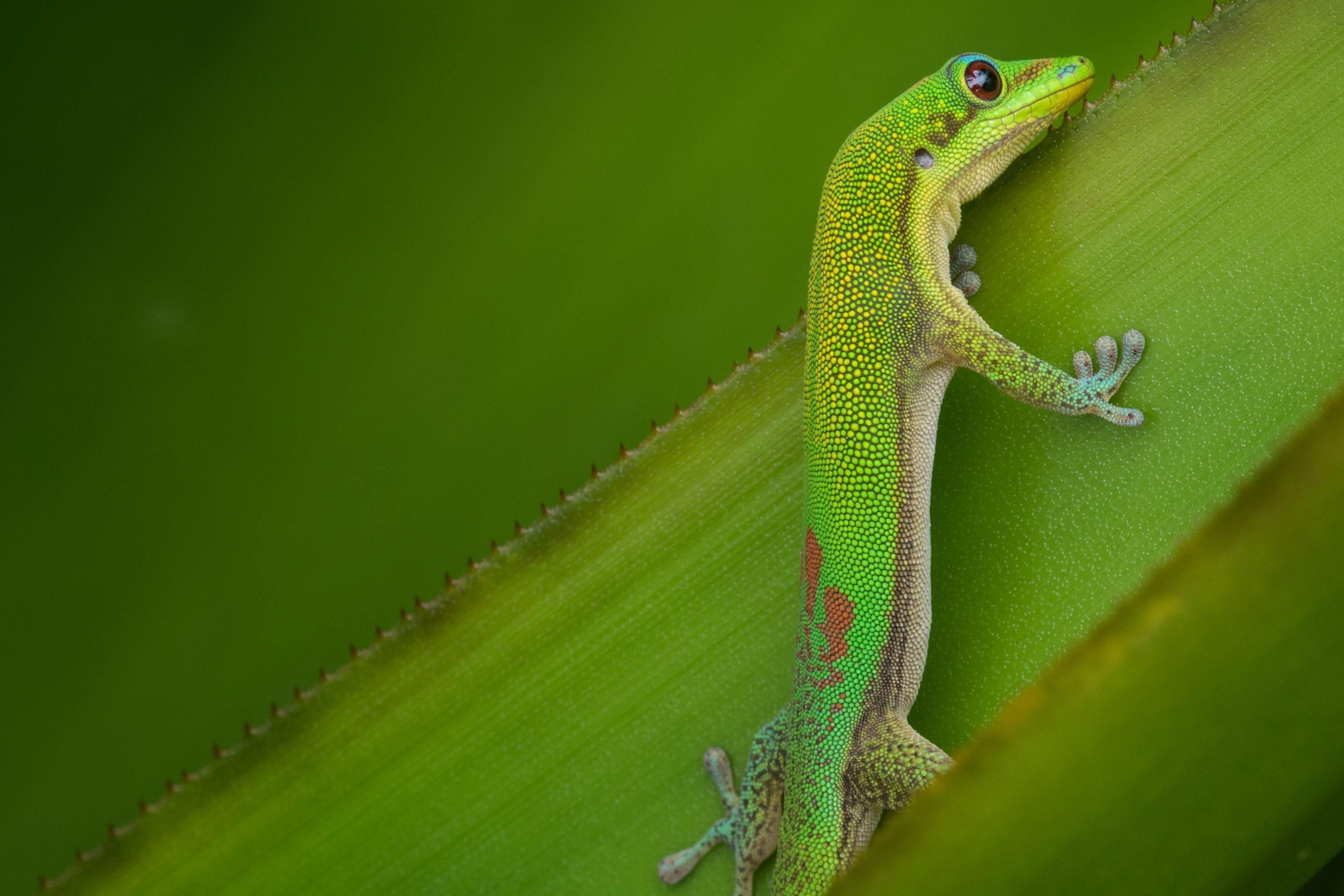Northland green gecko
(Naultinus grayii)

Description
The Northland green gecko or Gray's tree gecko (Naultinus grayii) is a species of gecko, a lizard in the family Gekkonidae. The species is found only in the Northland region of New Zealand, north of Whangaroa; it is one of the rarest and most highly sought after lizards. Naultinus grayii was originally described by Thomas Bell in 1843. The specific name, grayii, is in honor of British herpetologist John Edward Gray. The Northland green gecko is vivid green with grey or gold-coloured markings on either side along the dorsal surface. Males have a blue band along the sides just below the limbs. Underneath, the ventral surface of both sexes is bright pale green, sometimes with a yellow tinge. The inside of the mouth is deep blue with a bright red tongue. Its total length (including tail) is up to 200 mm (7.9 in), and its snout-to-vent length (SVL) is up to 95 mm (3.7 in). The Northland green gecko is diurnal, often found sun-basking. It has an arboreal lifestyle, especially favouring stands of manuka, kanuka, and mingimingi. In 2012 the Department of Conservation classified the Northland green gecko as "At Risk" under the New Zealand Threat Classification System. It was judged as meeting the criteria for "At Risk" threat status as a result of it having a low to high ongoing or predicted decline. This gecko is also regarded as being "Data Poor". This species, like all the Naultinus species, is regarded as the Holy grail of Geckos among their keepers, often going for a large amount of money for a pair of lizards. Outside of its home range, it is most commonly kept in Europe where there are several keepers producing offspring, though still extremely rarely seen. In 2001 a German tourist was fined $12,000 for attempting to smuggle Northland green geckos out of the country in his underwear. Naultinus is a genus of geckos that are endemic to New Zealand. On account of their striking colouration, species in the genus Naultinus are commonly known as green geckos. There are nine described species in the genus. Species in the genus share a number of traits that set them apart as quite different from the rest of the world's two thousand odd gecko species, which are generally brown in colour, ovivaparous, short-lived and nocturnal. In contrast, Naultinus are green (with the exceptions of males in two South Island species which exhibit sexual dimorphism in colouration), ovovivaparous, live up to 30 years or more and are strictly diurnal.
Taxonomic tree:







